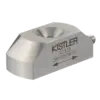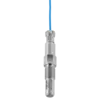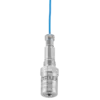歪センサ

キスラーの圧電式歪センサは、構造物に発生する歪を高分解能で測定するために使用できます。そのためには、センサを適切な位置に取り付けます。間接的な力の測定が必要な場合は、センサを校正します。ここで関係するのは、構造物の形状、材料の弾性率、機械的応力です。表面歪センサは、取り付けネジで構造物に取り付けられます。構造物のひずみは、静止摩擦によって測定素子に伝わります。歪測定ピンは、円筒形の取り付け穴が必要で、そこに歪センサを挿入して予圧をかけます。キスラーは、軸方向と半径方向が穴の軸に一致する圧電式歪センサを提供しています。
歪センサ掲載カタログ(PDF)ダウンロードはこちら
カテゴリとフィルタ
Need a consultation?
Our experts are just a click away







